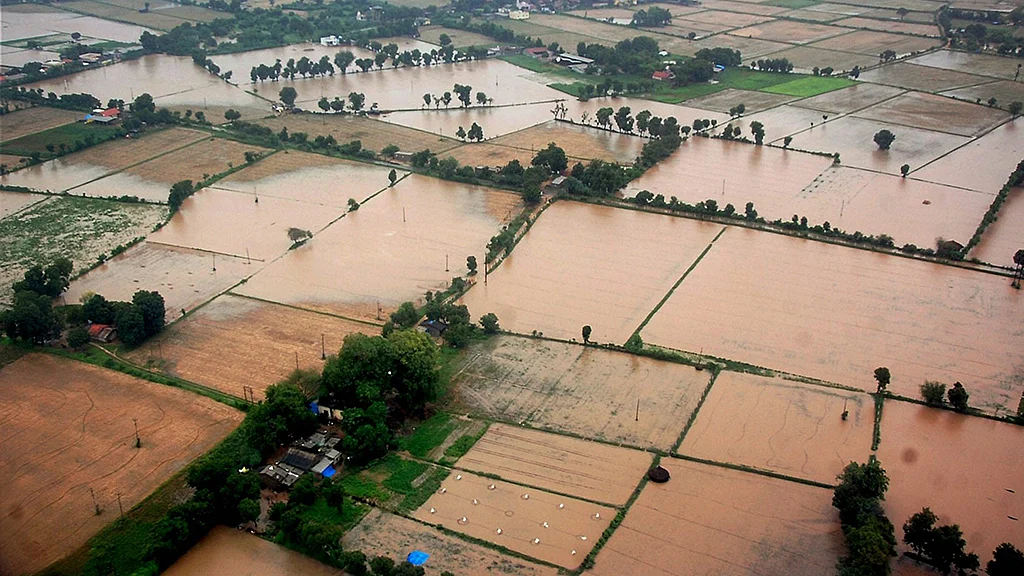Everyone loves a ‘good flood’, hints CAG report
Poor flood and fund management by Governments are responsible for floods in 17 states, reveals a scathing report on floods between 2007 and 2016

The country is sinking, literally, according to the CAG report on Schemes for Flood Control and Flood Forecasting. The report, which examined flood management programmes across 17 states from 2007 to 2016, discloses that while the UPA government’s track record has been dismal, the performance of the BJP-run states, which boasts of maximum governance, has been equally pathetic, if not worse.
Assam, where floods have been wreaking havoc, doesn’t have the much-promised wireless system in operation at the three flood forecasting station sites in Naharkatia, Jiabharali and Sivasagar and in two sites (Naharkatia, Jiabharali) the telemetry systems hasn’t been functioning. Embankments were supposed to have been constructed for over 30kms in the state, but it has seen only partial completion. And as a result, this area has been flooding every year since 2012.
In neighbouring Arunachal Pradesh, anti-erosion works were found completely damaged and submerged in sand. Along the river Lohit, ‘revetments’ (concrete structures made to break the flow and force of water on the banks of rivers, dams and seaside) were constructed only for 403m as against the required 1,005m. Even where it was built, only remnants could be seen. In what seems to be a joke almost, a 40-metre concrete wall, which was supposed to be built on the left of river Iril in Manipur, was built on the right of the river.
In West Bengal, after the damage by the 2011 floods, protection work was meant to have been executed along the banks of river Bhagirathi, but until now, no repair or maintenance work has been undertaken. The Uttar Pradesh government still hasn’t learnt from last year’s floods. Seepages have been noticed at the Khajuri dam and a flood control room hasn’t been established at Sirsi dam yet.
The CAG auditors found that two dams in Bihar, two in UP and one in West Bengal had cracks but no remedial measures were taken. The damning CAG report states that dams and poor flood management systems have been responsible for most of the man-fuelled disasters. This has increased the average annual damage due to floods to ₹1,805 crore.
“The funds are usually used for the creation of embankments, building diversion channels, check dams and installation of flood forecasting gadgets,” said Manish Kumar, principal director of the audit.
Verification of the flood prone areas hasn’t been done in most of the states currently reeling under floods such as Arunachal Pradesh, Bihar, Jharkhand, Odisha and Manipur. The CWC, which has to inspect works costing more than ₹15 crore, did not monitor projects in either Assam or Arunachal Pradesh.
The report states that funds amounting to ₹171.28 crore in six projects in five States (Bihar, Himachal Pradesh, Jharkhand, Uttar Pradesh and West Bengal) were not utilised. “These funds have remained unutilised, in some cases, for almost 60 months,” said Kumar. In Punjab, there was a delay of 13 years in getting the Detailed Project Report (DPR) approved by the Empowered Committee.
In Bihar, the total expenditure incurred on the five projects was ₹830.79 crore exceeding the approved estimate by ₹75.96 crore,” added Kumar.
In Himachal, of the five approved projects, only two were based on a mathematical model and even the central monitoring agencies did not insist on reports. “At least ₹36.57 crore allocated for projects in Assam, Himachal Pradesh and Tamil Nadu were diverted by the agencies for works not approved,” added Kumar.
Of the 4,862 dams in the country, disaster management plans have been made for only 349 of them. In Tamil Nadu, the Water Resource Department did not prepare emergency action plans for the reservoirs in Chennai and its suburbs. This could have helped management of the floods, say experts.
In Himachal Pradesh there are 19 dams, but inundation maps have been made only for two of them. These maps help identify areas that would be flooded in case of a dam failure or unusually large spillway releases.
When National Herald reached out to VD Roy, director – flood management and forecasting, CWC, he said the water ministry has taken a note of the CAG report and they will take a decision soon. “The ministry is still compiling facts based on the report,” Roy added. Efforts to reach out to the Ministry of Water Resources proved futile.
Says water activist Rajendra Singh of Tarun Bharat Trust, “I do not know what the government has been doing. Flood-prone areas have increased eight times since Independence. What is worse is that now, drought and flood are hitting at the same time. This is due to displacement of natural wisdom and destruction in the name of development.”
Follow us on: Facebook, Twitter, Google News, Instagram
Join our official telegram channel (@nationalherald) and stay updated with the latest headlines
- Assam
- Arunachal Pradesh
- CAG
- UPA Government
- CAG report
- Schemes for Flood Control and Flood Forecasting
- flood management
- Embankments
- CWC
- Tarun Bharat Trust
